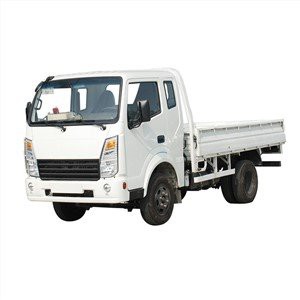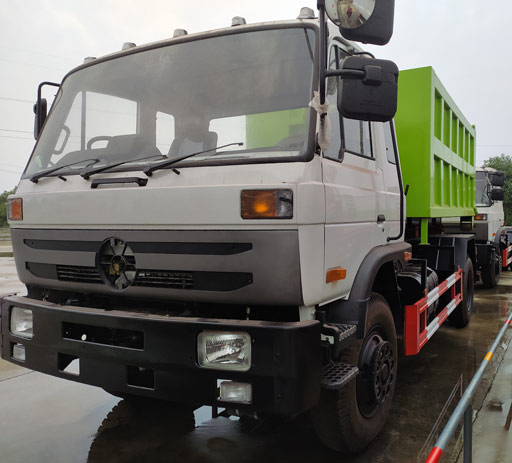Cascade Waste Containers: Maximizing Efficiency in Waste Management

In the realm of waste management, the term “cascade waste containers” is gaining traction as industries strive for more efficient solutions. These containers are designed to optimize the collection, recycling, and disposal of waste, aligning with sustainable practices. Understanding the intricacies of cascade waste containers is crucial for businesses, facilities, and municipalities aiming to improve their waste management systems. This article delves into the anatomy of cascade waste containers, their benefits, types, best practices, and more.
Understanding Cascade Waste Containers
Cascade waste containers are specialized receptacles designed to streamline waste collection in a systematic manner. The term “cascade” refers to the structured layering of waste management processes where waste is collected, sorted, and processed in stages. This method reduces contamination and enhances recycling rates.
How Do Cascade Waste Containers Work?
Cascade waste containers operate on a tiered approach, providing distinct compartments for various types of waste. This facilitates easier sorting at the source, reducing the need for extensive sorting later in the recycling or disposal process. For example:
- Top Layer: Typically designated for recyclable materials such as paper, plastics, and metals.
- Middle Layer: May be used for organic waste like food scraps or yard waste.
- Bottom Layer: Reserved for residual waste that cannot be recycled or composted.
Components of Cascade Waste Containers
The primary components of cascade waste containers include:
- Material: Often made from durable plastics or metals that can withstand various weather conditions.
- Color Coding: Each compartment is usually color-coded for easy identification of waste types.
- Compartments: Varying sizes and shapes to accommodate different waste streams.
- Lids and Access Points: Designed for easy access while preventing unauthorized access and odors.
Benefits of Cascade Waste Containers
Adopting cascade waste containers offers multifaceted advantages:
1. Enhanced Recycling Rates
The segregation of waste at the source significantly improves recycling rates by reducing contamination. When recyclable materials are kept separate, they are more likely to be successfully processed and reused.
2. Cost-Effective Waste Management
Reducing contamination leads to lower disposal costs and less waste sent to landfills. This can result in substantial savings for municipalities and businesses alike.
3. Environmental Impact
Cascade waste containers contribute to a more sustainable waste management strategy by promoting recycling and composting, thereby conserving resources and reducing greenhouse gas emissions.
4. Improved Cleanliness and Aesthetics
With designated compartments, litter and spillage are minimized, resulting in cleaner public spaces and improving the visual appeal of neighborhoods and facilities.
Types of Cascade Waste Containers
Cascade waste containers come in various types, each suited for specific applications:
1. Residential Containers
These are often smaller and designed for home use, encouraging homeowners to separate waste categories effectively.
2. Commercial Containers
Designed for businesses, these containers have larger capacities and may include features such as wheels for mobility.
3. Industrial Containers
Heavy-duty options are available for factories or warehouses where waste generation is higher and requires robust handling capabilities.
4. Public Space Containers
Often found in parks, shopping centers, and schools, these containers are user-friendly and aesthetically designed to fit into public environments.
Choosing the Right Cascade Waste Container
Selecting the appropriate cascade waste container involves several considerations:
1. Assess Waste Generation
Evaluate the types and quantities of waste generated at your location to determine the size and number of containers needed.
2. Space Availability
Ensure that there is sufficient space for the containers, considering their accessibility and visibility to encourage use.
3. Education and Training
Provide clear signage and instructions on how to use cascade waste containers effectively to ensure proper sorting and use.

Implementing Cascade Waste Containers in Your Organization
Successfully introducing cascade waste containers entails a strategic approach:
1. Conduct Waste Audits
Analyze your existing waste management practices to identify areas for improvement and determine the types of waste generated.
2. Select Containers
Choose the right type, size, and number of containers based on your waste audit findings and organizational needs.

3. Promote Awareness
Run campaigns to educate employees or community members on the importance of waste separation and recycling.
4. Monitor and Adjust
Post-implementation, it’s essential to regularly monitor the system’s effectiveness and make adjustments as necessary to improve sorting and reduce contamination.
Maintenance of Cascade Waste Containers
Proper maintenance ensures the longevity and efficiency of cascade waste containers:
1. Regular Cleaning
Schedule periodic cleanings of containers to prevent odors and pest attraction.
2. Maintenance Checks
Regularly inspect containers for damages or wear that could affect their functionality.
3. Replacement of Containers
Be prepared to replace containers that are worn out or damaged beyond repair to maintain the system’s efficiency.
Case Studies of Effective Cascade Waste Container Implementation
1. Municipal Case Study: City of Greenfield
In 2021, the City of Greenfield implemented cascade waste containers across its parks. As a result, municipal recycling rates increased by 30% within one year.
2. Corporate Case Study: ABC Manufacturing
ABC Manufacturing adopted cascade waste containers in their facilities, leading to a reduction in landfill waste by 50% within 18 months due to improved recycling practices.
Challenges of Cascade Waste Container Systems
1. User Compliance
Encouraging proper usage can be difficult; educational initiatives are necessary to foster good habits.
2. Upfront Costs
Initial investment in high-quality containers may deter some businesses or municipalities from adopting these systems.
3. Sorting Errors
Despite best intentions, misplacement of waste can still occur. Ongoing education and signage are essential to minimize errors.
Future Trends in Waste Management and Cascade Waste Containers
As waste management evolves, several emerging trends influence cascade waste containers:
1. Smart Waste Management Solutions
Integration of technology, such as sensors to monitor waste levels in containers, will be increasingly common, enhancing efficiency.
2. Increased Focus on Composting
With the push for zero waste, more organizations are adopting composting solutions, leading to the development of specialized containers for organic waste.
3. Community Engagement
Community-based approaches and collaborative initiatives are likely to play a significant role in promoting effective waste management practices.
FAQs about Cascade Waste Containers
1. What materials can I place in cascade waste containers?
Generally, cascade waste containers can be separated into recyclables (plastics, paper, metals), organic waste (food scraps), and residual waste (non-recyclables and non-compostables).

2. How often should cascade waste containers be emptied?
Frequency of emptying depends on usage but should be monitored regularly to prevent overflow and contamination.
3. Can cascade waste containers be used outdoors?
Yes, most cascade waste containers are designed to withstand outdoor elements, but proper maintenance is essential to ensure durability.
4. How can I improve user compliance with sorting waste?
Implement educational programs, clear signage, and possibly training sessions to ensure proper usage of cascade containers.
5. Are there specific regulations regarding waste separation?
Regulations vary by region, so it is essential to check local legislation for any specific requirements on waste separation and recycling.
6. What should I do if my cascade waste container is damaged?
If a container is damaged, it should be replaced promptly to maintain compliance and functionality. Regular inspections can help prevent issues before they arise.
